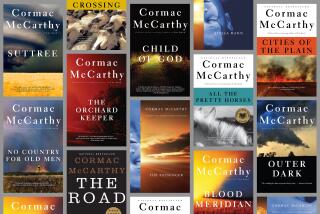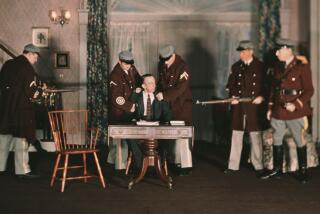In the beginning
- Share via
Two currents run through “The Rising,” a prequel to the bestselling “Left Behind” books, much as there are two currents running through the entire series. On one side, call it the dark side if you want, extreme violence is perpetrated on Christian (a very narrow version of Christianity) believers and nonbelievers alike by the antichrist Nicolae Carpathia and Satan’s forces, as well as by a militant, bloodthirsty avenging God who often seems no better in his thirst for power than the forces of the antichrist he’s fighting against.
On the other side are the everyday lives of the novels’ heroes -- often banal, prudish and devoid of any sense of irony, unlike the usual thriller fiction. (Think Christian rock versus punk rock; the edge is pretty much obliterated.) They face many moral dilemmas in a time of chaos as the world comes to an end and the antichrist rises to power for a seven-year reign before Christ’s second coming. The series of 13 books described those seven years, in which a group of believers called the “Tribulation Force” fought against Carpathia and his followers. The “Left Behind” books have sold more than 60 million copies in the last decade.
Yet, in “The Rising,” intended as a prequel to the series’ dark days, the two currents never meet: It’s as if there were two books in one. There is the antichrist, a genetically engineered test-tube baby with the DNA of two homosexual fathers, whose ascension to power is built on a complex scaffolding of old-time right-wing conspiracy theories and the 150-year-old “literal” interpretation of the Book of Revelation known as dispensational premillennialism. Credit this part to Tim LaHaye, the politically prominent evangelical activist who first fictionalized the end times and Rapture beliefs into the “Left Behind” series.
Then there is the story that follows one of the heroes of the Tribulation Force, the pilot Rayford Steele. This part is altogether much tamer and more subdued than the story of Carpathia, the characters more real and well-rounded, and their experiences more applicable to the lives of readers of the series. (The story of these characters seems to be the Jerry Jenkins side of the series, and it shows.) While Carpathia is created by a conspiratorial group of “international bankers,” young Rayford Steele is out playing soccer, baseball and football, and going through puberty and eventually off to college, where he falls for a pretty cheerleader and socialite only to realize that he doesn’t love her. No real blood or gore here and little of the heavy-handed moralizing and paranoid politicking of the other half of the plot.
The gulf is so great between these two sides of the story that one wonders if Jenkins is revolting or distancing himself from the more extreme political religiosity of LaHaye -- albeit too little, too late. This prequel sets up Carpathia as embodying everything stereotypically liberal, and the image of Jesus Christ is so debased that he comes across only as a version of the vengeful God of the Old Testament and the apocalyptic Jesus of the Book of Revelation. (The series largely ignores any version of the Jesus of the Gospels.) Short on love and forgiveness, heavy on fear and vengeance, could the “Left Behind” novels finally be waning? Readers will have to wait at least until next fall for the second prequel of three, or the end of the world, whichever comes first.
More to Read
Sign up for our Book Club newsletter
Get the latest news, events and more from the Los Angeles Times Book Club, and help us get L.A. reading and talking.
You may occasionally receive promotional content from the Los Angeles Times.










